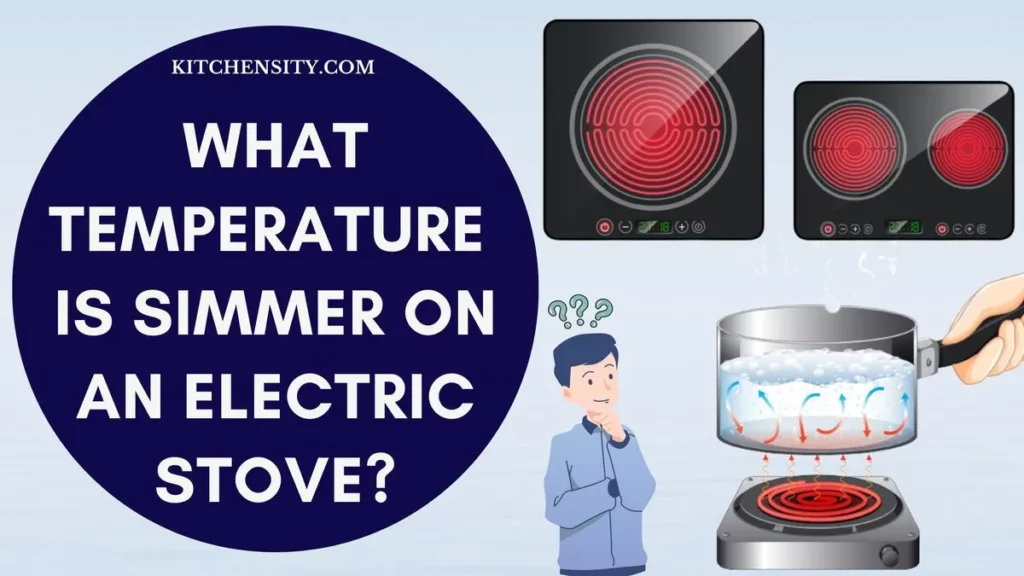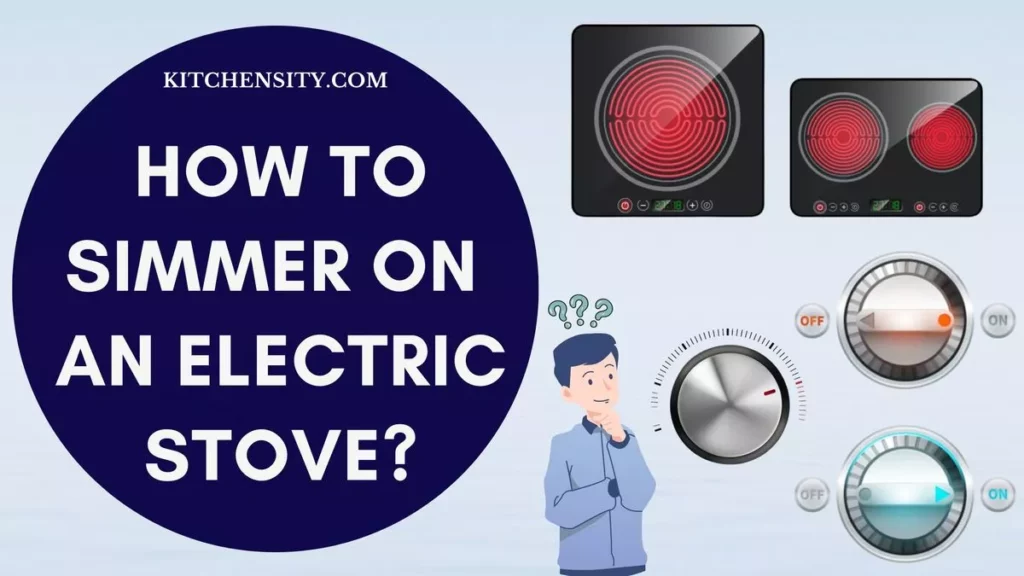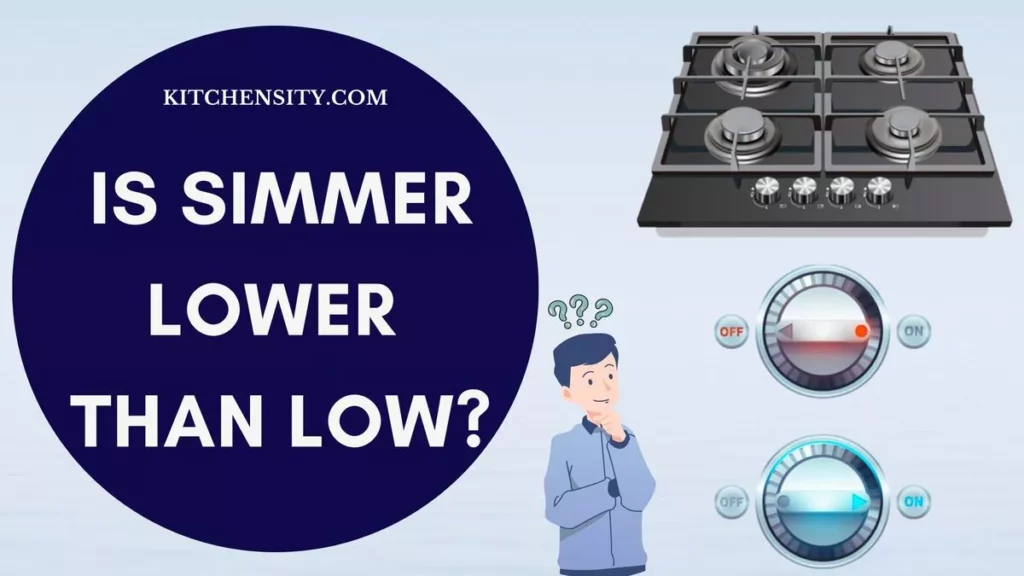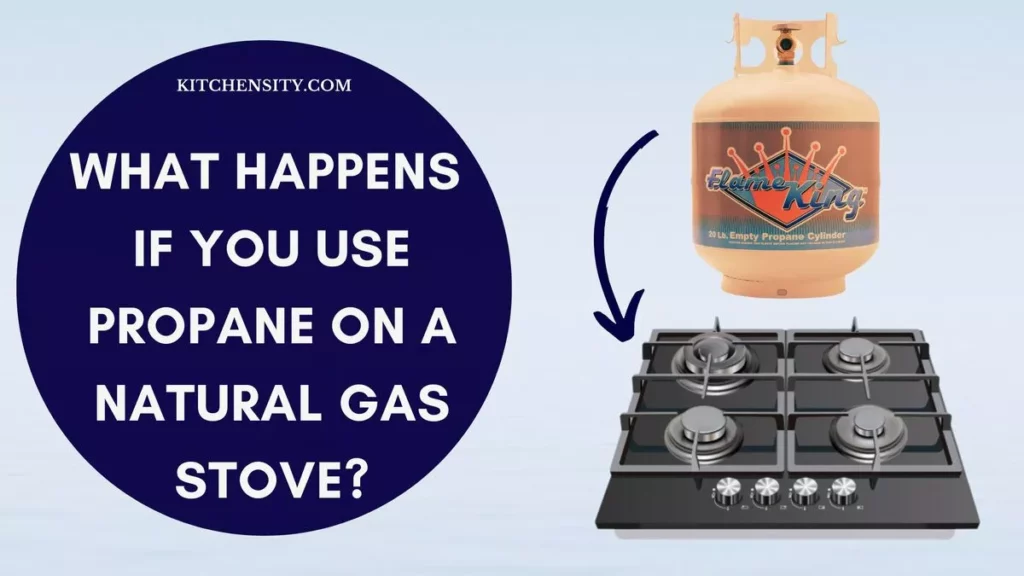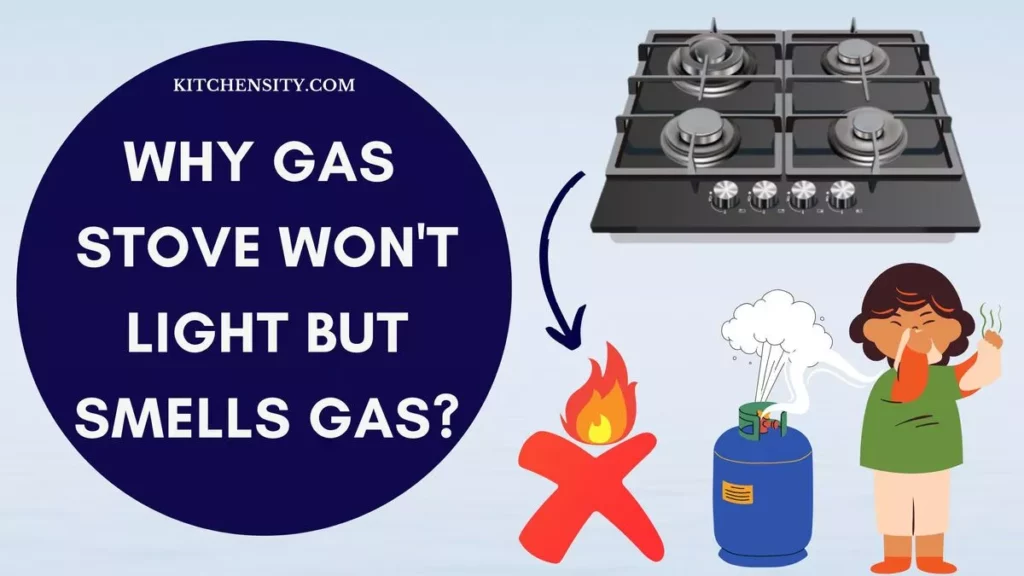Gas stoves are an essential part of many kitchens, offering precise control over cooking temperatures. However, when the grates on your gas stove are too high, it can lead to uneven cooking and frustration.
In this article, we will explore the reasons behind high stove grates and provide practical solutions to tackle this common kitchen dilemma.
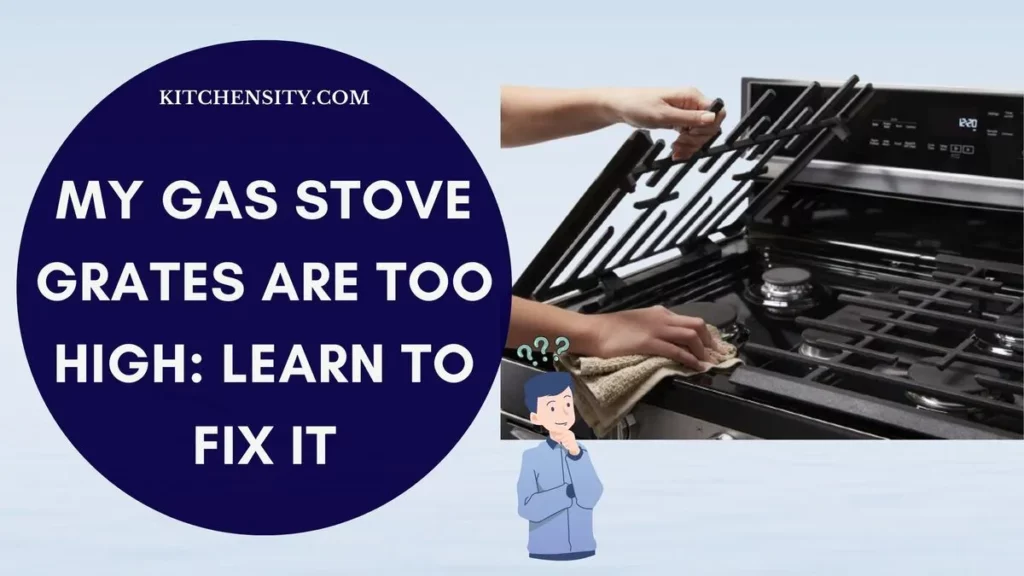
Table of Contents
- 1 My Gas Stove Grates Are Too High: Why?
- 2 The Impact On Cooking If Your Gas Stove Grates Are Too High
- 3 How To Solve The Problem Of Gas Stove’s Higher Grates?
- 4 Why Do Some Gas Stoves Have Higher Grates?
- 5 Can I Change The Grates On My Gas Stove?
- 6 How To Prevent The Future Issues?
- 7 Final Thoughts On Gas Stove Grates Are Too High
- 8 Frequently Asked Questions (FAQs)
- 8.1 Why Is My Gas Cooktop Grates Are Too High?
- 8.2 Can I Adjust The Height Of My Gas Stove Grates Myself?
- 8.3 Is It Normal For Gas Stove Grates To Wear Out Over Time?
- 8.4 Can I Use Aftermarket Grates As Replacements?
- 8.5 Is Uneven Cooking A Common Issue Related To High Stove Grates?
- 8.6 When Should I Seek Professional Help For My Gas Stove Grate Issues?
My Gas Stove Grates Are Too High: Why?
There are several reasons why your gas stove grates might be too high, and understanding these causes is essential for finding an appropriate solution:
- Incorrect Installation: One common reason for high gas stove grates is incorrect installation. If the grates were not installed properly during the initial setup of your stove, they might sit too high above the burners. This can happen due to human error during assembly or installation.
- Wear And Tear: Over time, gas stove grates can experience wear and tear, especially if you frequently move heavy pots and pans across them. This wear can lead to the grates becoming uneven or warped, causing them to sit higher than they should. Corrosion and rust can also contribute to this problem, leading to an increase in grate height.
- Manufacturing Defects: In some cases, manufacturing defects can be the culprit. If the grates were not made to the correct specifications or if there was a flaw in the manufacturing process, they might end up being higher than intended. This is a rare occurrence but a possibility, especially with mass-produced appliances.
- Damage Or Deformation: Accidental damage, such as dropping a heavy object on the grates, can cause them to deform and become elevated. Cracks or bends in the grates can lead to an uneven surface, making them sit too high above the burners.
- Incompatibility With Cookware: Sometimes, the issue might not be with the grates themselves but with the cookware being used. If the bottom of your pots and pans is not flat or has uneven surfaces, they might not sit properly on the grates, causing an illusion that the grates are too high.
- Natural Gas Pressure: In rare cases, fluctuations in natural gas pressure can cause the flames to burn higher than usual. This increased flame height can make it appear that the grates are sitting too high, although the problem lies with the gas supply.
- Expanding Metal Due To Heat: When the stove is used for a long time, especially at high temperatures, the metal components, including the grates, can expand due to the heat. While this expansion is usually minimal and designed to be within safe limits, excessive heat or poor-quality materials can cause the grates to expand more than intended, leading to an increase in height
The Impact On Cooking If Your Gas Stove Grates Are Too High
High gas stove grates can significantly impact your cooking experience in various ways:
- Uneven Heating: When the grates are too high, the distance between the burner flame and the cookware increases. This gap can lead to uneven heating. Certain parts of your cookware may receive less heat, resulting in unevenly cooked food. For example, one side of a pan may cook faster than the other, leading to inconsistent results.
- Extended Cooking Time: Due to the reduced heat transfer caused by the increased distance between the flame and the cookware, your food might take longer to cook. Recipes that should ideally take a certain amount of time might require extra minutes, impacting your overall cooking efficiency.
- Inefficient Energy Use: High grates force you to use higher flame settings to compensate for the increased distance. This elevated flame not only wastes energy but also puts a strain on your gas supply. Inefficient energy use can lead to higher utility bills and increased environmental impact.
- Difficulty In Simmering: Simmering, a cooking technique that requires low and gentle heat, becomes challenging with elevated grates. Achieving the precise low heat necessary for simmering is difficult when the flame has to travel a longer distance. This can result in dishes boiling instead of simmering, affecting the texture and flavor of your food.
- Safety Hazards: Uneven grates can create unstable cooking surfaces. Pots and pans may wobble, increasing the risk of spills and accidents. Spilled hot liquids or food can cause burns or other injuries, posing a significant safety hazard, especially in busy kitchens.
- Limited Cookware Compatibility: Cookware with smaller bases might not make proper contact with the elevated grates. This limited compatibility reduces your options for pots and pans, potentially restricting your culinary creativity and flexibility in the kitchen.
- Frustration And Discomfort: Cooking is an art that requires precision and attention. When your equipment doesn’t function optimally, it can lead to frustration and discomfort. The joy of cooking diminishes when you constantly struggle with uneven heating and longer cooking times.
So, high gas stove grates affect the consistency, efficiency, and safety of your cooking endeavors. Addressing this issue promptly ensures that you can enjoy a seamless cooking experience, allowing you to create delicious meals with confidence and ease.
Also Read – Why Did My Glass Stove Top Crack?
How To Solve The Problem Of Gas Stove’s Higher Grates?
Solving the problem of high-gas stove grates requires a systematic approach. Here are several effective solutions to consider:
- Adjusting The Burner Height:
- Consult The Manual: Refer to your stove’s manual to understand how to adjust the burner height. Many gas stoves have adjustable legs or screws beneath the burners that allow you to modify their height.
- Use Correct Tools: If adjustments are possible, use the appropriate tools, such as a screwdriver or wrench, as indicated in the manual. Make gradual adjustments, testing the height after each change to achieve the desired level.
- Replacing Damaged Grates:
- Identify Compatibility: If wear and tear have caused the grates to become uneven, consider replacing them. Identify the model number and brand of your stove to ensure compatibility when purchasing replacement grates.
- Purchase Genuine Parts: Buy replacement grates from the stove’s manufacturer or authorized dealers. Genuine parts guarantee proper fit and function, ensuring your safety and the stove’s efficiency.
- Professional Inspection And Repair:
- Certified Technician: If adjusting the burner height or replacing grates doesn’t resolve the issue, it’s advisable to contact a certified technician. These professionals have the expertise to inspect your stove thoroughly, identify the underlying problem, and perform necessary repairs.
- Regular Maintenance:
- Cleaning: Regularly clean your stove and grates to prevent corrosion and debris buildup. Use mild detergents and avoid abrasive materials to maintain the grates’ surface integrity.
- Prompt Spill Cleanup: Immediately clean spills and food residues to prevent damage. Acidic or sugary substances can corrode the grates over time.
- Gentle Handling:
- Avoid Impact: Handle the grates gently to prevent bending or deformation. Avoid dropping heavy objects on them, which can lead to cracks or uneven surfaces.
- Even Distribution Of Weight: Distribute the weight of cookware evenly across the grates. Avoid placing heavy pots or pans on just one side, which can cause warping.
- Cookware Selection: Opt for cookware with flat, even bottoms. This ensures better contact with the grates, promoting efficient heat transfer and reducing the chances of uneven cooking.
By applying these solutions, you can address the problem of high gas stove grates effectively, ensuring optimal performance, safety, and longevity of your kitchen appliance. Remember that safety is paramount; if you are unsure about making adjustments or repairs, always seek professional assistance.
Also Read – Do Gas Stoves Have Pilot Lights?
Why Do Some Gas Stoves Have Higher Grates?
Gas stoves with higher grates serve specific purposes and cater to different cooking needs. Here are several reasons why some gas stoves have higher grates:
- Better Heat Distribution: Stoves with higher grates often allow for better heat distribution. By elevating the cookware further from the flame, heat is dispersed more evenly across the bottom of pots and pans. This can be particularly useful for large or wide cookware where heat might otherwise concentrate in the center.
- Accommodating Larger Cookware: Higher grates provide ample space for larger cookware, such as stockpots, canning pots, or oversized pans. The additional height ensures that these larger vessels sit comfortably on the burners without obstructing the flames, allowing for efficient and uniform cooking.
- Enhanced Air Circulation: Raising the grates allows for increased air circulation around the burners. This improved airflow can aid combustion and help maintain a consistent flame, especially when using high-heat settings. It also prevents overheating of the burners, ensuring their longevity.
- Easier Access For Cleaning: Elevated grates make it easier to access the area underneath the burners. This accessibility simplifies the cleaning process, allowing users to reach and clean spills or debris without removing the grates entirely. It promotes better hygiene and maintenance.
- Facilitating Simmering: For certain cooking techniques like simmering, having higher grates can be advantageous. Simmering requires a low, consistent heat, and by raising the cookware, the flames can be adjusted to maintain the desired low temperature more effectively.
- Customized Cooking Experience: Some cooks prefer the flexibility of having variable grate heights. Stoves with adjustable grates allow users to modify the height according to their cooking needs. This customization ensures that the stove accommodates various cookware sizes and types.
- Improved Safety: Elevated grates can enhance safety by keeping the flame at a more considerable distance from the cookware. This reduces the risk of accidental spills catching fire and provides a safer environment, especially in households with children or inexperienced cooks.
- Catering To Professional Kitchens: In professional kitchens, chefs often work with diverse and large cookware. Stoves with higher grates are commonly found in commercial settings where chefs require the flexibility to use various pots and pans simultaneously, ranging from small saucepans to oversized woks.
Also Read – How To Fix A Pilot Light On A Gas Stove?
Can I Change The Grates On My Gas Stove?
Yes, you can typically change the grates on your gas stove. Most gas stoves are designed with removable grates, allowing for easy replacement when needed. Here’s how you can go about changing the grates on your gas stove:
- Identify The Correct Replacement Grates:
- Determine the model and brand of your gas stove. This information is usually located on a label or plate attached to the stove.
- Contact the manufacturer or an authorized dealer to find compatible replacement grates. Providing them with your stove’s model number ensures you get the right parts.
- Turn Off The Gas Supply: Before making any changes, turn off the gas supply to your stove. This is usually done via a shut-off valve located behind the stove.
- Remove The Old Grates:
- Lift the old grates out of their position. They are often simply placed on top of the burners and can be lifted off without any tools.
- Be careful when removing the grates, especially if they are damaged. You might want to wear gloves to protect your hands from sharp edges.
- Install The New Grates:
- Place the new grates onto the burners. Ensure they are positioned securely and evenly.
- Some grates have specific orientations, so make sure you align them correctly according to the burner layout of your stove.
- Test For Stability:
- Once the new grates are in place, gently press down on them to ensure they are stable and properly seated.
- Check if they wobble or move excessively. If they do, they might not be installed correctly, and you should double-check the placement.
- Turn On The Gas Supply And Check For Leaks:
- After confirming the grates are securely in place, turn the gas supply back on.
- Perform a leak test by applying a mixture of water and dish soap to the connections and observing for bubbles. If you see bubbles, there might be a gas leak. In this case, turn off the gas supply immediately and seek professional assistance.
- Regular Maintenance:
- To extend the lifespan of your new grates, follow proper cleaning and maintenance guidelines as provided by the manufacturer.
- Clean them regularly and address any spills promptly to prevent corrosion and damage.
Remember, if you are uncomfortable with the replacement process or encounter any difficulties, it’s best to seek assistance from a professional technician. They can ensure that the grates are installed correctly, guaranteeing your safety and the optimal functioning of your gas stove.
Also Read – What Is An Infrared Gas Stove?
How To Prevent The Future Issues?
Preventing future issues with your gas stove grates involves regular maintenance, careful use, and being mindful of how you handle both the grates and your cookware. Here are some proactive steps you can take to prevent future problems:
- Regular Cleaning:
- Prompt Cleanup: Clean the grates regularly after each use. Remove spills, grease, and food residues promptly. This prevents buildup, corrosion, and potential damage to the grates.
- Mild Detergents: Use mild dish soap and warm water to clean the grates. Avoid harsh chemicals or abrasive scrubbers that can damage the surface.
- Proper Use:
- Even Cooking: Use appropriately sized cookware that fits well on the grates. Evenly distribute the weight of pots and pans to prevent warping and uneven surfaces.
- Avoid Excessive Heat: Avoid using extremely high heat settings unnecessarily. Excessive heat can accelerate wear and tear on both the grates and the burner components.
- Gentle Handling:
- Avoid Dropping: Handle the grates with care. Avoid dropping heavy objects on them, as this can cause cracks or deformities.
- Careful Cookware Placement: Place cookware gently on the grates to prevent impact. Avoid sliding pots and pans, as this can scratch the surface.
- Regular Maintenance Checks: Regularly inspect the grates and other stove components for signs of wear, damage, or corrosion. Address any issues promptly to prevent them from worsening.
- Avoid Harsh Cleaners: If you need to use a cleaner, choose non-abrasive options specifically designed for stove grates. Harsh chemicals can damage the surface and compromise their integrity.
- Use Burner Covers: Consider using burner covers when the stove is not in use. These covers prevent debris, dust, and spills from accumulating on the grates, extending their lifespan.
- Regular Professional Maintenance: Schedule periodic professional maintenance for your gas stove. Certified technicians can perform thorough inspections and address minor issues before they escalate into significant problems.
- Follow Manufacturer Guidelines: Always follow the manufacturer’s guidelines for cleaning, maintenance, and usage. These guidelines are designed to maximize the lifespan and performance of your gas stove grates.
By adopting these preventive measures, you can ensure that your gas stove grates remain in optimal condition, providing efficient and safe cooking experiences for years to come. Regular care and attention can significantly extend the lifespan of your kitchen appliances.
Also Read – How To Clean An Infrared Gas Stove?
Final Thoughts On Gas Stove Grates Are Too High
In a nutshell, if your gas stove grates are too high, there’s no need to worry. With a bit of care and the right steps, you can fix the issue easily. Adjusting the burner height, replacing damaged grates, and being gentle with your stove can make a big difference. Regular cleaning and using the correct cookware also help prevent future problems.
Remember, cooking should be enjoyable and stress-free. By following these simple solutions, you can keep your gas stove working perfectly. So, get back to your kitchen and cook up a storm without any worries!
Happy Cooking!
Also Read – My Gas Stove Making Noise When Off
Frequently Asked Questions (FAQs)
-
Why Is My Gas Cooktop Grates Are Too High?
Your gas cooktop grates are too high due to incorrect installation or wear and tear, causing uneven surfaces. Adjusting burners or replacing damaged parts can resolve the issue.
-
Can I Adjust The Height Of My Gas Stove Grates Myself?
While some stoves allow DIY adjustments, it’s recommended to consult the manual or seek professional help to avoid any damage or safety risks.
-
Is It Normal For Gas Stove Grates To Wear Out Over Time?
Yes, wear and tear are natural, especially with frequent use. Regular cleaning and gentle handling can prolong their lifespan.
-
Can I Use Aftermarket Grates As Replacements?
It’s best to use manufacturer-recommended replacement parts to ensure compatibility and safety.
-
Is Uneven Cooking A Common Issue Related To High Stove Grates?
Yes, high grates can lead to uneven cooking as the heat distribution becomes irregular. Addressing the height issue can resolve this problem.
-
When Should I Seek Professional Help For My Gas Stove Grate Issues?
If DIY adjustments and replacements don’t solve the problem, it’s advisable to contact a certified technician for a thorough inspection and repair.
🔧 Stove Expert | 🔥 Gas Guru | 🏠 DIY Enthusiast | 🎨 Painter Extraordinaire
John Davis is your go-to source for all things stoves, from expert repairs to maintenance tips. With a deep understanding of gas systems, including natural and propane, John ensures your kitchen stays cooking safely. His passion for DIY home and kitchen projects shines through his stunning paint transformations. Trust John to bring warmth and functionality to your home, one stove at a time.

